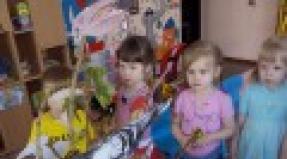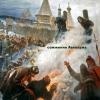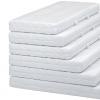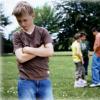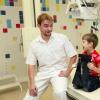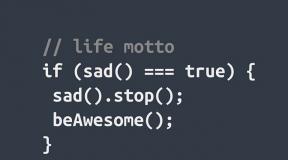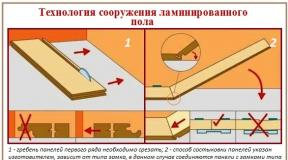Corrective work with aphasia. Corrective work for each form of aphasia. Restoration of written speech
Recovery stages:
1. Early stage- from one week to 6 months after a stroke.
Stage features:
We take into account the severity of the patient's condition in the period after the brain injury.
During this period, total aphasia is observed.
It is impossible to determine the specific form of aphasia.
Target:
Maximum assistance to the spontaneous recovery process, activation of the rate of recovery of oppressed and impaired functions;
Prevention of some symptoms of aphasia in the later stages of formation
Tasks:
Promote listening comprehension.
Disinhibition of expressive speech.
Stimulation of oral speech in patients.
Prevention of literal paraphasias, agrammatism such as "telegraph style", "speech emboli"
Classes should be psychotherapeutic in nature
A direct disinhibition method of restorative therapy is used, directly aimed at restoring impaired functions.
The work is carried out with the passive participation of patients in the learning process, patients are gradually drawn into verbal communication, into conversation.
A technique for the early stage of speech recovery in aphasia.
1. Stimulating listening comprehension.
An incentive form of speech is used, intonation and grammatical features can prevent the occurrence of different types of agrammatism in patients. Including agrammatism of the "telegraph style" type, since such speech is saturated with verbs.
In the early stages after a stroke, speech impairment is often detected in all forms of aphasia. At the same time, patients usually retain the perception of facial expressions and intonation. V.A. Artyomov shows that the perception of intonation accompanies any speech, from a word to a speech period, and is "the first door in understanding what has been heard." With the help of intonation, the thought conveyed in the sentence is quite complete.
2. Disinhibition of expressive speech
Disinhibition of oral speech with the help of singing, automated speech series.
Achieve the possibility of a clear conjugate and reflected repetition of these series.
3. Stimulating oral expression:
Development of active, proactive communication with people around. Aimed at removing speech passivity from the patient.
4. Setting sounds (if necessary). All sounds are introduced into speech based on visual and auditory perception.
The pronunciation of individual sounds is not so much fixed as in a monosyllabic word.
5. Getting started on stimulating reading and writing. But more often such work is carried out at a later stage.
6. Establishing contact with the patient, strengthening his confidence in tim, that as a result of training, his speech will gradually recover.
7. The personality of the speech therapist is of great importance.
At an early stage, in most cases, the pronunciation side of speech is restored.
At a later stage of restorative education, planned classes are held. At this stage, the aphasia syndrome takes on a specific form.
Correctional and pedagogical work at the residual stage.
The residual stage is a long period of recovery of speech functions a year after a stroke or injury.
Target: restoration of speech using the intact sides of the psyche, stimulating the activity of intact elements of the analyzers.
Tasks:
1. continuation of work with patients who have undergone a course of rehabilitation training at an early recovery stage.
2. restoration of the speech of patients who have not completed the course of restorative training.
Sick people are speechless,
Patients with speech emboli: these patients are characterized by the peculiarity of the mental state, the presence of persistent agrammatisms and speech emboli.
A speech embolus is a sound complex, a word that can be pronounced by a patient or a trigger mechanism without which it is impossible to pronounce a single word.
3. Differentiation of methods of rehabilitation therapy for different forms of aphasic disorders, the choice of methods of rehabilitation therapy, taking into account the stage of restoration of speech functions.
At the residual stage, not only the form and severity of aphasia is determined, but also the degree of combination of different forms. Speech disorder takes on the character of a persistent, prevailing syndrome (form) of SPEECH DISORDER.
The use of techniques that stimulate the general development of speech, contributing to the restructuring of impaired speech functions.
4. Restorative work takes into account the work on all aspects of speech, regardless of which one is primarily impaired.
5. development of the generalizing and communicative side of speech.
6. At this stage, the patient's conscious active participation in the recovery process is required. Development of the ability to self-control over one's own speech.
- a disorder of previously formed speech activity, in which the ability to use one's own speech and / or understand the addressed speech is partially or completely lost. The manifestations of aphasia depend on the form of speech impairment; specific speech symptoms of aphasia are speech emboli, paraphasia, perseveration, contamination, logorrhea, alexia, agraphia, acalculia, etc. Patients with aphasia need an examination of the neurological status, mental processes and speech function. In case of aphasia, treatment of the underlying disease and special rehabilitation training are carried out.

General information
Aphasia - decay, loss of already existing speech, caused by local organic damage to the speech areas of the brain. In contrast to alalia, in which speech is not formed initially, with aphasia the possibility of verbal communication is lost after the speech function has already been formed (in children over 3 years old or in adults). Patients with aphasia have a systemic speech disorder, that is, expressive speech (sound pronunciation, vocabulary, grammar), impressive speech (perception and understanding), inner speech, written speech (reading and writing) suffer to some extent. In addition to speech function, the sensory, motor, personal sphere, and mental processes also suffer, therefore aphasia is one of the most complex disorders, which are studied by neurology, speech therapy and medical psychology.

Causes of aphasia
Aphasia is a consequence of organic damage to the cortex of the speech centers of the brain. The action of the factors leading to the onset of aphasia occurs during the period of speech already formed in the individual. The etiology of aphasic disorder affects its nature, course and prognosis.
Among the causes of aphasia, the largest specific weight is occupied by vascular diseases of the brain - hemorrhagic and ischemic strokes. Moreover, patients who have had a hemorrhagic stroke are more likely to have total or mixed aphasic syndrome; in patients with ischemic disorders of cerebral circulation - total, motor or sensory aphasia.
In addition, craniocerebral trauma, inflammatory brain diseases (encephalitis, leukoencephalitis, abscess), brain tumors, chronic progressive diseases of the central nervous system (focal variants of Alzheimer's disease and Pick's disease), and brain surgery can lead to aphasia.
Risk factors that increase the likelihood of aphasia include old age, family history, cerebral atherosclerosis, hypertension, rheumatic heart defects, transient ischemic attacks, head trauma.
The severity of aphasia syndrome depends on the location and extent of the lesion, the etiology of speech impairment, compensatory capabilities, the patient's age and premorbid background. So, with brain tumors, aphasic disorders increase gradually, and with TBI and stroke, they develop sharply. Intracerebral hemorrhage is accompanied by more severe speech impairments than thrombosis or atherosclerosis. The recovery of speech in young patients with traumatic aphasia is faster and more complete due to the greater compensatory potential, etc.
Classification of aphasia
Attempts to systematize the forms of aphasia on the basis of anatomical, linguistic, psychological criteria have been repeatedly undertaken by various researchers. However, the classification of aphasia according to A.R. Luria, taking into account the localization of the lesion in the dominant hemisphere - on the one hand, and the nature of the speech disorders arising in this case - on the other. In accordance with this classification, motor (efferent and afferent), acoustic-gnostic, acoustic-mnestic, amnestic-semantic and dynamic aphasia are distinguished.
Correction of aphasia
Corrective action for aphasia consists of medical and speech therapy directions. Treatment of the underlying disease that caused aphasia is carried out under the supervision of a neurologist or neurosurgeon; includes drug therapy, if necessary - surgery, active rehabilitation (exercise therapy, mechanotherapy, physiotherapy, massage).
The restoration of speech function is carried out in speech therapy classes for the correction of aphasia, the structure and content of which depends on the form of impairment and the stage of restorative learning. With all forms of aphasia, it is important to develop the patient's mindset for the restoration of speech, develop intact peripheral analyzers, work on all aspects of speech: expressive, impressive, reading, writing.
With efferent motor aphasia, the main task of speech therapy classes is to restore the dynamic scheme of word pronunciation; with afferent motor aphasia - differentiation of kinesthetic signs of phonemes. With acoustic-gnostic aphasia, it is necessary to work on the restoration of phonemic hearing and understanding of speech; with acoustic-mnestic - overcoming defects in auditory-speech and visual memory. The organization of training in amnestic-semantic aphasia is aimed at overcoming impressive agrammatism; with dynamic aphasia - to overcome defects in internal programming and speech planning, to stimulate speech activity.
Corrective work for aphasia should be started from the first days or weeks after a stroke or injury, as soon as the doctor permits. An early start of restorative learning helps prevent the fixation of pathological speech symptoms (speech embolus, paraphasias, agrammatism). Speech therapy work to restore speech in aphasia lasts 2-3 years.
Prediction and prevention of aphasia
Speech therapy work to overcome aphasia is very long and laborious, requiring the cooperation of a speech therapist, the attending physician, the patient and his relatives. Recovery of speech in aphasia proceeds the more successfully, the earlier the correction work is started. The prognosis of the restoration of speech function in aphasia is determined by the localization and size of the affected area, the degree of speech disorders, the timing of the start of restorative learning, the age and general health of the patient. The best dynamics is observed in young patients. At the same time, acoustic-gnostic aphasia, which occurs at the age of 5-7 years, can lead to a complete loss of speech or subsequent gross speech development (OHP). Spontaneous recovery from motor aphasia is sometimes accompanied by stuttering.
Prevention of aphasia is, first of all, in the prevention of cerebral vascular accidents and TBI, timely detection of tumor lesions of the brain.
Speech therapist, children's clinic in Raduzhny, Khanty-Mansi Autonomous Okrug-Yugra.
Aphasia is the disintegration of existing skills in speaking and writing.
Aphasia is a systemic decay of the expressive or impressive side of speech, the higher mental functions of the personality and the behavior of the patient of cortical genesis, which occurs after 3 years.
When people talk about aphasia it is:
1. Disorder of speech with damage to the cerebral cortex.
2. Systemic disintegration of mental activity.
3. Arbitrary and non-voluntary functions of speech suffer.
4. Speech and non-speech processes (agnosia, apraxia) suffer.
Causes of aphasia.
1. Cardiovascular diseases, strokes.
2. Inflammatory processes of the brain.
3. Traumatic brain injury.
4. Tumors of the cerebral cortex.
Forms of aphasia:
Three forms are motor.
Afferent motor aphasia.
Efferent motor aphasia.
Dynamic aphasia.
Three forms are sensory.
Acoustic-gnostic aphasia.
Acoustic-mnestic aphasia
Semantic aphasia.
The most common and frequently encountered in practice is afferent motor aphasia.
This is a systemic disintegration of the expressive side of speech and other higher mental functions of the personality, the behavior of patients.
The breakdown of speech is based on kinesthetic apraxia. Voluntary movements are violated, and involuntary ones are relatively preserved.
Symptoms are observed:
1. Disintegration by an article (sounds, phonemes) - replacement of one sound with another.
2. Decay of phonemic hearing (sounds close in the method and place of formation do not differentiate.
3. Vocabulary breaks down.
4. Decay of the grammatical form of the word. (Masha drink milk.)
5. All functions of speech are impaired - communicative, regulatory, cognitive.
Rehabilitation training.
The main central task is to eliminate kinesthetic apraxia, which is corrected in two ways.
1. The opticotactile method is aimed at correcting sounds - this is articulatory gymnastics, sound production, automation and differentiation of sounds. Apply this method only at the very end of the training.
2. Indirect method.
The method is directed:
To revive ideas about objects and words that name these objects.
On the use of visual and auditory analyzers.
To use relatively safe writing and reading.
All restorative training is divided into several stages.
Preliminary stage of training.
1. Disinhibition of the functions of the articulatory apparatus.
2. Development of kinesthetic sensation of the hand, facial muscles and general movements.
Relaxation techniques:
1. Widely use subject pictures and questions to them. Selection of pictures, use based on children's vocabulary topics.
2. Make extensive use of automated speech, i.e. speech is the most strengthened in the patient's past experience (ordinal count, days of the week, months of the year, singing of familiar melodies, songs). This material is used for psychotherapy.
3. Use sentences - antonyms (light during the day, and at night?).
4. Use appositions, i.e. oppositions (the plane flies, and the bus?) This very well helps to actualize the word.
5. Use emotions in speech. To do this, select topics about the family, work, and employees.
6. Use various puns (there was a tall man, small in stature).
7. Concluding well-known phrases, automated phrases.
8. Make extensive use of proverbs (the speech therapist begins the proverb, and the patient finishes).
9. Singing tunes of familiar songs.
10. Listening to short, but emotionally rich stories.
All these listed techniques will create conditions for disinhibition of the functions of the articulatory apparatus, enliven performances on all children's topics, develop the patient's attention, intensify their activity, and are the conditions for spontaneous expression.
Then all these techniques will be applied in the form of charging at other stages.
At this stage of learning, there is an elimination of hand apraxia, facial expressions, general and fine motor skills.
The fingers are massaged, but without touching the palmar part.
Then kinesthetic sensations of the fingers develop (hard brushes, toys, dummies of fruits and vegetables).
In order to get rid of mimic apraxia, use massage of the face, cheeks, use mediated gymnastics.
In patients with afferent motor aphasia, there is a violation of the general motor sphere. Therefore, training is provided on how to wash dishes, sew on buttons, etc.
The first stage of training.
Restoring passive vocabulary.
At the same time, attention is paid to the correct pronunciation of sounds, words. The semantics of words is being worked out. The method of actualization of words is used (semantic, visual, auditory stimulation). All training is planned according to a specific program. Program
consists of a series of sequential operations.
1. An object or a picture is laid out in front of the patient. The task is to remember the name of the picture. Then you can connect the plot pictures. After the patient's answer, the speech therapist names the subject, shows it in the plot picture, and begins to talk about this subject.
2. The subject is introduced by the speech therapist into all kinds of semantic connections.
3. The patient correlates what he heard with the corresponding picture. In addition, he is invited to remember everything. What does he know about the subject.
4. The patient is offered a classification of objects by color, shape and size.
5. The patient is invited to draw and touch objects.
Ultimately, all these activities help to actualize the words. The patient begins to pronounce various words with disturbed sounds.
Second stage of training.
The main task:
Updating active vocabulary. This is the elimination of expressive agrammatism and the continuation of work on disinhibition of the functions of the articulatory apparatus.
Words are actualized with the help of visual, auditory, semantic stimulation.
All training is based on a program that consists of a series of sequential operations:
1. One object is laid out before the patient and the task is set: to update the name of the object, to tell everything that he knows about it. After that, the patient listens to everything that the speech therapist tells about the subject.
2. The patient examines the subject, listens to the description of this subject and compares his knowledge with what he heard. If the patient does not remember the object, then the third operation is connected.
3. Kinesthetic sensations of the hand, i.e. the patient closes his eyes and feels the object and at the same time listens to everything that the speech therapist says about him. If this does not help to remember the subject, then the next operation is connected.
4. The subject is removed from the patient's hand and asked to draw what was in the hands. At the same time, the speech therapist talks about the subject. If this does not help to remember the subject, then proceed to the next operation.
5. The subject is entered into the general category, i.e. encourage the patient to pick up other objects or pictures that belong to this category.
In this case, the speech therapist has the following requirements:
Match words of one semantic field.
You cannot demand the correct pronunciation of a word.
You cannot demand the repetition of a specific word.
As soon as the words are actualized, it is included in phrases, sentences. In this case, the word should be in different cases in the sentence.
The movements of the articulatory apparatus become free, light, obedient.
In order to consolidate articulation skills when mastering new sounds, the speech therapist must repeat the previous material many times.
As the apraxia of the articulatory apparatus is overcome, they switch to conjugated and reflected pronunciation of everyday phrases from pictures, stimulate the patient's independent speech.
Recovery is situational. colloquial speech is one of the primary tasks of both the initial stage of correctional and pedagogical work, and with moderate severity of afferent motor aphasia.
The reconstructed sounds are introduced into words and phrases necessary for communication (well, I'll be there tomorrow, today, I had a doctor, I already ate, etc.)
As the situational dialogical speech emerges, the restoration of monologue speech begins. The main goal is to expand the patient's vocabulary, develop a detailed oral and written utterance, and prepare for free speech.
As the sound-letter analysis of the composition is restored, the words move from the oral composition of phrases from pictures to the written, recording the patient's achievement.
An important role in the restoration of reading and writing is assigned to visual dictation of individual words, phrases and short sentences.
With gross afferent motor aphasia, a split alphabet is used to restore the analysis of the composition of a word, inscribing missing letters in a word and a phrase.
Overcoming gross articulatory disorders in afferent motor aphasia - a long period from 3 months to 1 year.
Residual phenomena of impaired pronunciation are also observed when the patient's afferent motor aphasia becomes of moderate and mild severity.
Literature:
1. Vinarskaya E.N. "Clinical problems of aphasia" M. medicine 1974.
2. Opel V.V. "Recovery of speech after a stroke" M. education 1989.
3. Tsvetkova L.S. "Rehabilitation training in local brain lesions" M. Enlightenment 1972.
4. Speech therapy. Edited by LS Volkova. M. Vlados 2004
E. S. Bein, M. K. Burlakova (Shokhor-Trotskaya), T. G. Vizel, A. R. Luria, L. S. Tsvetkova made a great contribution to the development of principles and techniques for overcoming aphasia.
In speech therapy work to overcome aphasia, general didactic principles of teaching (visibility, accessibility, consciousness, etc.) are used, however, due to the fact that the restoration of speech functions differs from formative teaching, that the higher cortical functions of the already speaking and writing person are organized somewhat differently than in a child who is beginning to speak (A.R. Luria, 1969, L.S.
1. After completing the examination of the patient, the speech therapist determines which area of the second or third "functional block" of the patient's brain has suffered as a result of a stroke or trauma, which areas of the patient's brain are preserved: in most patients with aphasia, the functions of the right hemisphere are preserved; in case of aphasias arising from damage to the temporal or parietal lobes of the left hemisphere, planning, programming and controlling functions of the left frontal lobe are primarily used, providing the principle of consciousness of restorative learning. It is the preservation of the functions of the right hemisphere and the third "functional block" of the left hemisphere that makes it possible to instill in the patient the mindset to restore impaired speech. The duration of speech therapy sessions with patients with all forms of aphasia is two to three years of systematic (inpatient and outpatient) sessions. However, it is impossible to inform the patient about such a long period of restoration of speech functions.
2. The choice of methods of correctional and pedagogical work depends on the stage or stage of restoration of speech functions. In the first days after a stroke, work is carried out with a relatively passive participation of the patient in the process of restoring speech. Techniques are used that disinhibit speech functions and prevent, at an early stage of recovery, such speech disorders as “telegraph style” agrammatism in case of efferent motor aphasia and an abundance of literal paraphasias in case of afferent motor aphasia. At the later stages of the restoration of speech functions, the structure and plan of classes are explained to the patient, the means that he can use when performing the task are given, etc.
3. The correctional-pedagogical system of classes presupposes such a choice of work methods that would allow either to restore the initially disturbed premise (in case of its incomplete breakdown), or to reorganize the intact links of the speech function. For example, the compensatory development of acoustic control in afferent motor aphasia is not just the replacement of impaired kinesthetic control with acoustic control to restore writing, reading and understanding, but the development of preserved peripherally located analytic elements, the gradual accumulation of the possibility of using them for the activity of a defective function. In sensory aphasia, the process of restoring phonemic hearing is carried out by using preserved optical, kinesthetic, and most importantly, semantic differentiation of words that are similar in sound.
4. Regardless of which primary neuropsychological prerequisite is violated, for any form of aphasia, work is carried out on all aspects of speech: on expressive speech, understanding, writing and reading.
5. With all forms of aphasia, the communicative function of speech is restored, self-control over it develops. Only when the patient understands the nature of his mistakes can conditions be created for him to control his speech, the narrative plan for the correction of literal or verbal paraphasias, etc.
6. For all forms of aphasia, work is underway to restore verbal concepts, including them in various phrases.
7. The work uses deployed external supports and their gradual internalization as the restructuring and automation of the impaired function. Such supports include, in the case of dynamic aphasia, the sentence scheme and the method of chips, which make it possible to restore an independent expanded utterance, in other forms of aphasia - the scheme for choosing the methods of articulation with the arbitrary organization of articulatory patterns of phonemes, schemes used to overcome impressive agrammatism.
The dynamics of restoration of impaired speech functions depends on the location and volume of the lesion, on the form of aphasia, the timing of the onset of restorative learning and the patient's premorbid level.
With aphasias resulting from cerebral hemorrhage, speech is restored better than with thromboembolism of cerebral vessels or extensive brain trauma. Aphasic disorders in 5-6 year old children (in most cases of traumatic origin) are overcome faster than in schoolchildren and adults.
Correctional and pedagogical work begins from the first weeks and days after a stroke or injury with the permission of a doctor and under his supervision. The early start of classes prevents the fixation of pathological symptoms and guides the recovery along the most expedient path. Restoration of impaired mental functions is achieved with prolonged speech therapy sessions.
With aphasia, individual and group speech therapy sessions are conducted. The individual form of work is considered the main one, since it is it that ensures the maximum consideration of the patient's speech characteristics, close personal contact with him, as well as a great opportunity for psychotherapeutic influence. The duration of each lesson at the early stage after a stroke is on average 10 to 15 minutes 2 times a day, in the later stages - 30-40 minutes at least 3 times a week. For group lessons (three - five people) with the same type of speech disorders and relatively the same stage of speech recovery, the duration of the lessons is 45-50 minutes.
The speech therapist should explain to the family the characteristics of the patient's personality associated with the severity of the disease. Specific examples explain the obligation of his feasible participation in the life of the family. Instructions are given to work on speech restoration.
Question 1: Aphasia. Classification. The structure of the speech defect. The main directions of work in different forms of aphasia.
Aphasia-complete or partial loss of speech due to local brain lesions.
The causes of aphasia are disorders of cerebral circulation (ischemia, hemorrhage), trauma, tumors, infectious diseases of the brain. Aphasias of vascular origin most often occur in adults. As a result of rupture of cerebral aneurysms, thromboembolism caused by rheumatic heart disease, and traumatic brain injury. Aphasias are often observed in adolescents and young people.
In children, aphasia occurs less frequently as a result of traumatic brain injury, tumor formation, or complications after an infectious disease.
Aphasia- one of the most severe consequences of brain damage, in which all types of speech activity are systemically impaired. The complexity of speech disorder in aphasia depends on the localization of the lesion (for example, the location of the lesion in case of hemorrhage in the subcortical regions of the brain allows us to hope for spontaneous restoration of speech), the size of the lesion, the characteristics of residual and functionally intact elements of speech activity, with left-handedness. The reaction of the patient's personality to a speech defect and the features of the premorbid structure of the function (for example, the degree of reading automation) determine the background of restorative learning.
A.R. Luria distinguishes six forms of aphasia:
acoustic-gnostic
acoustic-mnestic aphasias arising from damage to the temporal regions of the cerebral cortex,
semantic aphasia
afferent motor aphasia arising from damage to the lower parietal regions of the cerebral cortex,
efferent motor aphasia
dynamic aphasia arising from damage to the premotor and posterior regions of the cerebral cortex (left in right-handers).
ACOUSTIC-GNOSTIC SENSOR APHASIA
A distinctive feature of this form of aphasia is a violation of understanding of speech when it is perceived by ear.
Loss of understanding. At an early stage after a stroke or trauma with sensory aphasia, there is a complete loss of understanding of speech: someone else's speech is perceived as an inarticulate stream of sounds. Misunderstanding of the speech of others and the absence of obvious movement disorders leads to the fact that patients do not always immediately realize that they have a speech disorder. They can be agitated, mobile, talkative. One and the same word can be perceived in different ways, the words house - volume, barrel - kidney, dot - daughter, etc. are mixed.
In connection with the violation of the phonemic perception of audible speech in acoustic-gnostic sensory aphasia, the auditory control of one's speech is disturbed. So, patient M. to the question: "Do you have a headache?" - answered: “Since this is for us, we are theirs, and so it has been for five years, the same was in the last years. That is a very sickness, well, head on over to it. "
Due to the violation of phonemic perception, the repetition of words suffers for the second time, and often the original word is automated, it is globally repeated correctly, but when listening to it and with repeated attempts to repeat it, a person loses not only the sound components of the word, but also loses its rhythmic-melodic basis.
The period of jargon-phasic lasts for more than 1.5-2 months, gradually giving way to logos (verboseness) with pronounced agrammatism.
Reading and writing disorders. When reading, a lot of literal paraphasias appear in the speech of a person with sensory aphasia, it becomes difficult to find the place of stress in a word, which makes reading comprehension more difficult. However, reading remains the most intact speech function in sensory aphasia, since it is carried out using optical and kinesthetic control.
Written speech in acoustic-gnostic aphasia, in contrast to reading, is impaired to a greater extent and is directly dependent on the state of phonemic hearing.
ACOUSTIC-MNESTIC APHASIA
A.R. Luria believes that it is based on a decrease in auditory-speech memory, which is caused by an increased inhibition of auditory traces. With the perception of each new word and its awareness, the patient loses the previous word. This violation also manifests itself when repeating a series of syllables and words.
Loss of understanding. Acoustic-mnestic aphasia is characterized by a dissociation between the relatively intact ability to repeat individual words and the violation of the possibility of repeating three or four words that are not related in meaning (for example: hand - house - sky; spoon - sofa. - cat; forest - house - ear, etc.) etc.). Usually, patients repeat the first and last word, in more severe cases - only one word from a given series of words, explaining this by the fact that they did not remember all the words. When re-listening, they also do not keep either their sequence, or omit one of them.
Violation of expressive speech. With this form of aphasia, expressive speech is characterized by difficulties in choosing the words necessary to organize the utterance. Difficulties in finding words are explained by the impoverishment of visual representations of the subject, the weakness of the optical-gnostic component. Semantic blurring of the meaning of words leads to abundant verbal paraphasia, rare literal substitutions, merging of two words into one, for example, "knife" (knife + fork).
Reading and writing disorders. With acoustical-mnestic aphasia in written speech, a mixture of prepositions, as well as inflections of verbs, nouns and pronouns, mainly in gender and number. When writing a text under dictation, patients experience significant difficulties in retaining even a three-word phrase in their auditory-speech memory, while they ask to repeat each fragment of the phrase.
With acoustic-mnestic aphasia, significant difficulties arise in understanding the read text.
AMNESTIC-SEMANTIC APHASIA
Amnestic-semantic aphasia occurs when the parieto-occipital region of the dominant hemisphere is affected. With the defeat of the parieto-occipital (or posterior inferior parietal) parts of the cerebral hemisphere, a smooth syntagmatic organization of speech is preserved, no searches for the sound composition of the word are noted, there are no phenomena of a decrease in auditory speech memory or violations of phonemic perception.
Specific amnestic difficulties are observed when searching for the right word or arbitrarily naming an object, when patients, with difficulties in finding a lexical paradigm, turn to the description of the functions and qualities of this object by syntagmatic means, that is, they do not replace one word with another (verbal paraphrasies), but replace the word with a whole phrase , they say: "Well, this is what they write with," "... this is what they cut with," etc., and on the other hand, there is a complex and impressive agrammatism characteristic of this form of aphasia.
Loss of understanding. Patients understand well the meaning of separate prepositions, they freely put a pencil under a spoon or spoon to the right of the fork, but find it difficult to arrange three objects according to the instructions: "Put the scissors to the right of the fork and to the left of the pencil." They experience even greater difficulties in the arrangement of geometric figures, they are not able to solve such a logical-grammatical problem.
Patients also find it difficult to understand complex syntactic structures expressing causal, temporal and spatial relationships, adverbial and participial phrases.
Violation of speaking and writing. Expressive speech with semantic aphasia is distinguished by the preservation of the articulatory side of speech. However, there may be pronounced amnestic difficulties, the hint of the first syllable or sound of the word helps the patient. The words are replaced by a description of the function of the object: "Well, this is what one looks through to the street" or "This is what time shows."
The poverty of vocabulary is expressed in the rare use of adjectives, adverbs, descriptive phrases, participial phrases, participial and adverbial phrases, proverbs, sayings, in the absence of searching for an exact or "apt" word.
AFFERENT KINESTHETIC MOTOR APHASIA
Violation of expressive speech. AR Luria notes (1969, 1975) that there are two variants of afferent kinesthetic motor aphasia.
The first is characterized by a violation of the spatial, simultaneous synthesis of movements of various organs of the articulatory apparatus and a complete absence of situational speech with a gross severity of the disorder. The second variant, which is called "conductive aphasia" in the clinic, is distinguished by a significant preservation of situational, cliché-like speech with a gross decay of repetition, naming, and other arbitrary types of speech. This variant of afferent kinesthetic motor aphasia is characterized mainly by a violation of the differentiated choice of the method of articulations and the simultaneous synthesis of sound and syllable complexes included in the word.
Therefore, often the words here, there, here, table, hat, etc. sound like "tu-t", "ta-m", "vo-th", "s-to-l", "sha-p- ka ", etc.
Loss of understanding. At an early stage after trauma or stroke, with afferent aphasia, there may be a gross impairment of speech understanding.
With afferent kinesthetic motor aphasia, difficulties arise in recognizing by ear words with sounds that have common signs in place and method of articulation (labial: b - m - p, anterior lingual: d - l - m - n, sonorant slit: n - x - w , sonorants and vowels, etc.). These difficulties of phonemic analysis are generally compensated by the redundancy of phonemic differences between words in colloquial speech and allow them to understand it, but they are reflected in the writing of patients. The impairment of understanding a word worsens in those cases when the patient tries to speak it, that is, it includes primarily impaired kinesthetic control.
Reading and writing disorders. In afferent kinesthetic motor aphasia, the degree of impairment in reading and writing depends on the severity of apraxia of the articulatory apparatus. Reading and writing are most grossly impaired with severe apraxia of the entire articulatory apparatus. The restoration of reading and writing occurs in parallel with overcoming it.
EFFECTIVE MOTOR APHASIA
The linear, temporary organization of movement is carried out by the premotor zones of the cerebral cortex. Syntagmatic chains of sounds and syllables are formed in a word, words in a sentence, subject to a strict law of subordination: in a word, only such an order of sounds is required, and not a different order of sounds, in a sentence an adjective or preposition cannot stand before a verb or an adverb, etc. leading to sound, syllabic and lexical permutations and perseveration, repetitions. Perseverations, involuntary repetitions of words, syllables, resulting from the impossibility of timely switching from one articulatory act to another,
make it difficult, and sometimes make it completely impossible to speak, write, and read.
Impaired expressive speech... With gross efferent motor aphasia at an early stage after cerebrovascular accident, one's own speech may be completely absent.
Apraxin of the articulatory apparatus in this form of aphasia is manifested not in the difficulty of repeating individual sounds, but in the loss of the ability to repeat a series of sounds or syllables.
Reading and writing disorders. With efferent motor aphasia, pronounced agraphia is observed: writing a word or phrase is possible only when pronouncing words in syllables. In more severe cases, with the correct repetition of the word, it is impossible not only to write it down, but also to add the split alphabet from the already selected letters.
Loss of understanding. At the heart of the disorder of understanding in efferent motor aphasia is the inertia of all types of speech activity, a violation of the so-called "sense of language" and the predicative function of internal speech.
With gross efferent aphasia, perseverations are already apparent when simple instructions are followed. Individual body parts can be shown if there are long pauses between spoken words.
DYNAMIC APHASIA.
The main speech defect in this form of aphasia is the difficulty, and sometimes the complete impossibility of active development of the utterance. With dynamic aphasia, individual sounds are pronounced correctly, words and short sentences are repeated without articulatory difficulties, however, the communicative function of speech is still impaired.
Violation of expressive speech. There are several variants of dynamic aphasia, characterized by varying degrees of impairment of communicative function, from the complete absence of expressive speech to some degree of impairment of verbal communication. At the heart of dynamic aphasia is a violation of the internal programming of an utterance, which manifests itself in the difficulties of its planning when composing individual phrases. Patients need constant stimulation of speech. Their speech is distinguished by the primitiveness of the syntactic structure, the presence of speech patterns, while there is no agrammatism.
Impaired understanding of speech. With a mild degree of dynamic aphasia, the understanding of elementary situational speech, especially when presented at a somewhat slower pace, with pauses between instructions, remains intact. However, with the acceleration of the tasks presented, when displaying object pictures, parts of the face, perseverations can be observed, difficulties in quickly finding the object, and pseudo-alienation of the meaning of the word arises.
Aphasia in left-handed people. Only 40-42% of the population is absolutely right-handed.
CORRECTIVE-PEDAGOGICAL WORK IN ACOUSTIC-GNOSTIC SENSOR APHASIA
In case of acoustic-gnostic sensory and in case of acoustic-mnestic aphasia, there is an increased work capacity of the patient and an active desire to overcome speech disorders.
At the same time, he may experience a state of depression, in connection with which the speech therapist must constantly encourage him, give only homework that is feasible to complete, inform the doctor about the depressed or agitated state of the patient.
In case of acoustic-gnostic sensory aphasia, the task of correctional-pedagogical work is to restore phonemic hearing and secondarily impaired expressive speech, reading, and writing.
The speech therapist relies on intact analytic optical and kinesthetic systems, as well as intact functions of the frontal lobes, which together create the prerequisites for compensatory restructuring of impaired acoustic-gnostic functions.
In especially severe cases of sensory aphasia at an early stage of recovery, non-verbal forms of work are used, the purpose of which is to establish contact with the patient, explain the fact of the disease itself, organize his educational activities (perform feasible tasks), and concentrate attention. Writing short words to pictures and solving simple arithmetic examples are used.
The work on restoring phonemic perception contains the following stages:
the first stage is the differentiation of words that are contrasting in length, sound and rhythmic pattern (house is a shovel, spruce is a bicycle, a cat is a car).
Pictures are selected for each pair of words, and words are written in clear handwriting on separate strips of paper. The patient correlates the sound image of a word with a picture and a signature, he is asked to choose one or another picture, to expand the captions to the pictures, pictures to the signatures.
The second stage is the differentiation of words with a similar syllable structure, but distant in sound, especially in the root part of the word: fish - legs, fence - tractor, watermelon - ax. The work is carried out based on pictures, signatures to them, cheating, reading; acoustic control over their speech is brought up.
The third stage is the differentiation of words with a similar syllable structure, but with initial sounds that are distant in sound (cancer - poppy, hand - flour); with a common first sound and various final sounds (beak - key, night - zero, lion - forest). The patient is asked to choose words starting with one or another sound, based on object pictures and captions to them.
The fourth stage is the differentiation of phonemes that are similar in sound (house - volume, house - smoke, etc.).
To consolidate the unambiguous perception of phonemes, various exercises are used to fill in the missing letters in a word and a phrase, words with oppositional sounds, the meaning of which is no longer specified through a drawing, but through a phraseological context. For example, the patient is asked to insert the words carcasses, souls, body, deeds, etc. into the text.
The fifth stage is the consolidation of the acoustic differential features of phonemes when selecting a series of words for a given letter from texts.
CORRECTIVE-PEDAGOGICAL WORK IN ACOUSTIC-MNESTIC APHASIA
The main tasks of correctional and pedagogical work in acoustical-mnestic aphasia are overcoming impairments of auditory-speech memory, restoration of visual ideas about the essential features of the subject, as well as overcoming amnestic difficulties and elements of expressive agrammatism.
In overcoming speech disorders in acoustical-mnestic aphasia, the speech therapist uses the mechanism of coding the concept of a speech utterance, describing the features of an object, introducing a word into various contexts, and drawing up external supports that allow the patient to maintain a different volume of auditory-speech load.
The restoration of auditory-speech memory is based on visual perception. A series of subject pictures, different in semantic interconnection, are laid out in front of the patient, and the task is given to choose two, three or four objects from them. Due to the fact that in speech the words are connected by the intention of the utterance, then first among the "randomly" selected pictures with the image, for example, a hare, a plate, a table, a gun, a forest, etc., he is invited to show objects that can be inscribed in this or that situation. For example, it is proposed to show a fork, a table, a cucumber or a forest, a hunter, a hare, etc. Then words are given that are not included in one semantic field.
At the next stage of restoration of auditory-speech memory, object pictures are given in the form of a stack. The patient, having listened to a series of names of objects, finds their images and puts them aside. This achieves some delay in the execution of instructions in time. Subsequently, it is proposed to repeat a series of words worked out in previous lessons, without resorting to the help of pictures. First, for memorization, words denoting objects are given, then the actions and qualities of objects and, finally, numbers combined into telephone numbers. In parallel with this, auditory dictations of phrases consisting of two, three, four words are carried out, based on the plot picture, and later without it.
The restoration of a written statement is one of the forms of consolidation of the results achieved in overcoming amnestic disorders. The preservation of the understanding of the sound-letter composition of the word and the significant preservation of phonemic hearing allow from the very first days of correctional and pedagogical work to use the compilation of written texts, which helps to overcome the poverty of the vocabulary and the agrammatism characteristic of the "back" forms of aphasia.
Violation of agreement in the gender and number of the main members of the sentence is overcome by replacing nouns with pronouns and pronouns with nouns, composing phrases based on supporting words, the ability to end a sentence, insert missing prepositions and inflections of nouns.
CORRECTIVE-PEDAGOGICAL WORK IN SEMANTIC APHASIA
The main tasks of speech therapy work with semantic aphasia are: overcoming the difficulties of finding the names of objects, expanding the lexical and syntactic composition of patients' speech, overcoming impressive agrammatism.
Correctional and pedagogical assistance to overcome semantic aphasia relies on the control of all intact analytic systems (vision, auditory-speech memory), and most importantly, on the planning and regulating functions of the frontal parts of the brain, on the intact linear organization of oral speech.
Exercises are needed in the visual analysis of geometric figures, ornaments, composed of elements reconstructed according to a visual model and according to instructions, restoring the patient's orientation in the left and right, in parts of the world, in a geographical map. Structural-spatial apraxia is overcome by teaching the plan for dividing an ornament or drawing into certain segments and performing the task according to the plan (for example, first the lower "floor", then the second, third, etc., or first the first column on the left, then the second, etc. .).
Overcoming impressive agrammatism begins with clarifying the meanings of individual prepositions and adverbs, mastering the preposition scheme with moving a point (object) around a drawn table, house, glass.
To overcome the acalculia, the digits included in the number (tens, hundreds, thousands, etc.) are clarified, the meanings of the synonyms minus - subtraction, plus - addition are fixed. Patients are invited to perform actions within one to two dozen, then within a hundred and a thousand. A special place in overcoming the defects of counting operations is occupied by the solution of arithmetic problems in 2-3-4 actions with the use of adverbs more, less and verbs to subtract, add, send, unload, etc., that is, verbs with prefixes that convey spatial relationships actions and objects.
CORRECTIVE-PEDAGOGICAL WORK IN AFFERENT MOTOR APHASIA
Correctional and pedagogical assistance in overcoming afferent motor aphasia relies on the inclusion of intact visual and acoustic control, as well as the controlling function of the frontal parts of the left hemisphere in right-handers, who, in combination, carry out visual and auditory analysis of the speech signal read and received by hearing, control over the optical synthesis of visible elements articulatory structure, etc.
The general tasks of correctional and pedagogical work in afferent motor aphasia are to overcome violations of the kinesthetic articulatory praxis, which ensures overcoming agraphia, alexia, impaired understanding of speech, and then the restoration of detailed oral and written utterances.
CORRECTIVE-PEDAGOGICAL WORK IN EFFECTIVE MOTOR APHASIA
The main tasks of correctional and pedagogical work with efferent motor aphasia are overcoming pathological inertia in the generation of the syllabic structure of a word, restoring the feeling of language, overcoming inertia in word choice, agrammatism, restoring the structure of oral and written utterance, overcoming alexia and agraphia.
Overcoming the impaired pronunciation side of speech with efferent motor aphasia begins with the restoration of the rhythmic-syllabic scheme of the word, its kinetic melody.
Simultaneously with the restoration of the sound and syllable structure of the word, work begins to restore the narrative speech.
Overcoming violations of narrative speech begins with the restoration of the so-called sense of language, catching the harmony of rhymes in poetry, proverbs and sayings. It is especially helpful to use proverbs and sayings with rhyming verbs.
To restore smooth writing, the patient is taught to write repeatedly with his left hand, first individual capital letters, then words and phrases.
CORRECTIVE-PEDAGOGICAL WORK IN DYNAMIC APHASIA
The main task of working with dynamic aphasia is to overcome the defects of internal speech programming.
With a significantly pronounced aspect, the patient is given various exercises for the classification of objects according to different criteria (furniture, clothing, dishes, round objects, square, wooden, metal, etc.); direct and reverse ordinal counting is used, subtraction from 100 by 7, by 4, etc.
Overcoming the defects of internal programming is carried out by creating utterance programs for patients with the help of various external supports (questions, sentence patterns, chips), gradually reducing their number and subsequent internalization, rolling this scheme “inward”. The patient, transferring his index finger from one token to another, gradually develops the speech utterance according to the plot picture, then proceeds to visual tracking of the utterance deployment plan without associated motor reinforcement and, finally, compiles these phrases without external supports, resorting only to intra-speech planning of the utterance ...
Ticket number 24


